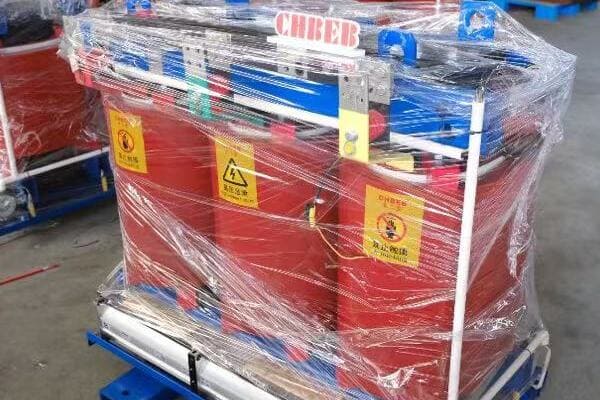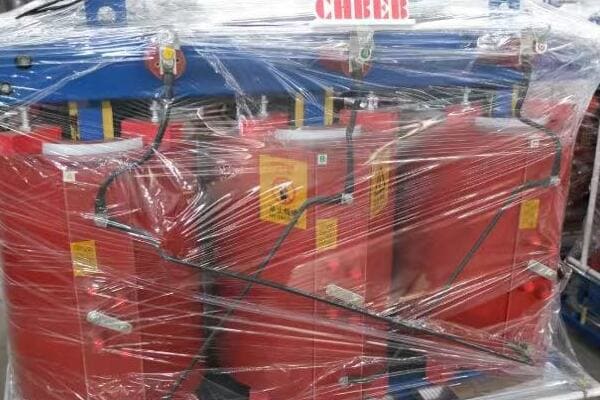Dry Type Distribution Transformer Standards Explained: IEC 60076, IEEE C57, and UL Guidelines?
Are you struggling to navigate the complex world of dry type transformer standards? You’re not alone. Many engineers and procurement professionals find themselves confused by the various international and regional requirements. But what if you had a clear guide to help you understand and apply these standards effectively?
Dry type distribution transformers must comply with international standards like IEC 60076, IEEE C57, and UL guidelines. This article compares the key technical and safety requirements of each, helping engineers and procurement teams ensure product compliance for export, tender, or installation across global markets.
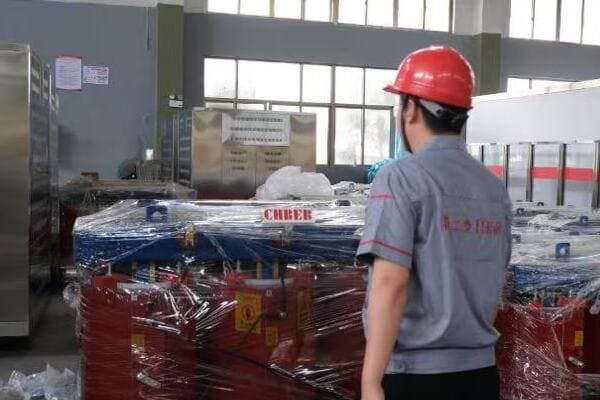
In this comprehensive guide, I’ll walk you through the main standards for dry type transformers, explaining their scope, requirements, and applications. Whether you’re working on a local project or planning for international exports, this article will provide you with the knowledge to make informed decisions about transformer standards compliance.
What Are the Main Standards for Dry Type Transformers?
Are you wondering which standards are most relevant for dry type transformers? With so many guidelines and regulations out there, it can be overwhelming to determine which ones apply to your project. But what are the key standards you need to know about, and why are they important?
The main standards for dry type transformers include IEC 60076, IEEE C57, and UL guidelines. IEC 60076 is widely used internationally, IEEE C57 is prominent in North America, and UL standards focus on safety aspects. These standards cover design, performance, testing, and safety requirements, ensuring transformers meet global quality and reliability benchmarks.
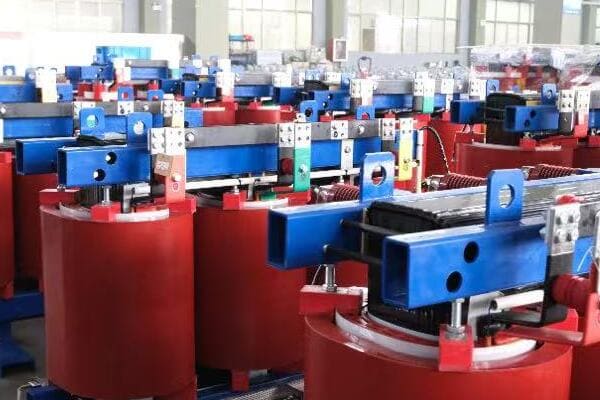
Understanding Key Transformer Standards
Let’s explore the main standards and their significance:
- IEC 60076 Series
- IEEE C57 Series
- UL Standards (UL 1561 and UL 1562)
- Regional Standards and Adaptations
- Harmonization Efforts and Trends
IEC 60076 Series
The International Electrotechnical Commission (IEC) standards are widely adopted:
- IEC 60076-11 specifically covers dry-type transformers
- Focuses on performance, testing, and safety requirements
- Widely recognized and used globally
I recently worked on a project where compliance with IEC 60076-11 was crucial for exporting transformers to multiple countries. The standard’s global recognition simplified the certification process significantly.
IEEE C57 Series
IEEE standards are prominent in North America:
- IEEE C57.12.01 covers dry-type transformers
- Emphasizes design specifications and test requirements
- Widely used in the United States and Canada
During a recent consultation for a U.S.-based manufacturing plant, adherence to IEEE C57 standards was essential for meeting local regulatory requirements and ensuring compatibility with existing infrastructure.
UL Standards
Underwriters Laboratories (UL) focuses on safety:
- UL 1561 for large dry-type transformers
- UL 1562 for smaller, general-purpose transformers
- Emphasizes fire safety and electrical hazard prevention
Here’s a quick comparison of these main standards:
| Standard | Primary Focus | Geographical Prominence | Key Aspects |
|---|---|---|---|
| IEC 60076 | Performance and Testing | Global | Comprehensive coverage of all aspects |
| IEEE C57 | Design and Testing | North America | Detailed specifications for local requirements |
| UL Standards | Safety | Global (emphasis on U.S.) | Fire resistance and electrical safety |
Regional Standards and Adaptations
Many regions have their own adaptations:
- China: GB standards (often based on IEC)
- India: IS standards (influenced by both IEC and IEEE)
- European Union: EN standards (harmonized with IEC)
Harmonization Efforts and Trends
There’s a growing trend towards harmonization:
- Efforts to align IEC and IEEE standards
- Increased recognition of IEC standards globally
- Development of dual-certified products meeting multiple standards
Key considerations when dealing with transformer standards:
- Understand the specific requirements of your target market
- Consider the need for multiple certifications for international projects
- Stay informed about ongoing harmonization efforts and updates
- Consult with experts or manufacturers for standard interpretation
- Consider the impact of standards on design, testing, and documentation
In my experience, a thorough understanding of these standards is crucial for successful transformer projects. I’ve seen cases where overlooking a specific standard requirement led to costly redesigns and project delays.
As we delve deeper into each standard, keep in mind that compliance is not just about meeting technical specifications – it’s about ensuring safety, reliability, and global market access for your transformer projects.
Overview of IEC 60076: Scope, Requirements, and Applications?
Are you grappling with the complexities of IEC 60076 for your dry type transformer projects? This international standard is crucial for many global markets, but its extensive scope can be overwhelming. What exactly does IEC 60076 cover, and how can you ensure your transformers meet its requirements?
IEC 60076, particularly Part 11 for dry-type transformers, covers design, manufacturing, and testing requirements. It specifies performance criteria, insulation levels, temperature rise limits, and test procedures. The standard applies to transformers with highest voltage for equipment up to 36 kV, ensuring safety, reliability, and performance consistency across international markets.
Key Aspects of IEC 60076 for Dry-Type Transformers
Let’s break down the essential elements of IEC 60076:
- Scope and Application
- Design and Construction Requirements
- Performance Specifications
- Testing Procedures
- Documentation and Marking
Scope and Application
IEC 60076-11 specifically addresses dry-type transformers:
- Covers transformers with highest voltage for equipment up to 36 kV
- Applies to both indoor and outdoor installations
- Includes both general-purpose and special application transformers
I recently consulted on a project where understanding the scope of IEC 60076-11 was crucial in determining whether a specialized transformer for a renewable energy application fell within its purview.
Design and Construction Requirements
The standard sets clear guidelines for transformer design:
- Specifies insulation levels and dielectric strength requirements
- Defines temperature rise limits for different insulation classes
- Outlines requirements for mechanical strength and environmental protection
During a recent manufacturing audit, we focused on ensuring that the core and winding designs met IEC 60076-11 specifications, particularly in terms of insulation class and temperature rise limits.
Performance Specifications
IEC 60076 defines key performance criteria:
- Establishes efficiency requirements and loss evaluation
- Specifies short-circuit withstand capabilities
- Defines noise level limits
Here’s a quick reference for some key performance specifications:
| Aspect | Requirement | Notes |
|---|---|---|
| Temperature Rise | Class B: 80K, Class F: 100K, Class H: 125K | At rated load |
| Insulation Level | Based on highest voltage for equipment | Specified in the standard |
| Short-Circuit Withstand | Mechanical and thermal requirements | Tested as per IEC procedures |
| Noise Levels | Varies based on rating and cooling method | Measured under specified conditions |
Testing Procedures
The standard outlines comprehensive testing requirements:
- Routine tests (applied to all units)
- Type tests (performed on representative units)
- Special tests (as agreed between manufacturer and purchaser)
I recall a project where we had to conduct additional special tests as per IEC 60076-11 to meet specific client requirements for a harsh industrial environment. These tests provided crucial data on the transformer’s performance under extreme conditions.
Documentation and Marking
IEC 60076 specifies clear documentation requirements:
- Detailed nameplate information
- Test reports and certificates
- Installation and maintenance manuals
Key considerations when working with IEC 60076:
- Ensure your design team is familiar with the latest version of the standard
- Pay close attention to the specific requirements for your transformer’s voltage class and application
- Consider the impact of environmental conditions on design choices
- Plan for comprehensive testing as per IEC procedures
- Maintain detailed documentation throughout the design and manufacturing process
In my experience, thorough compliance with IEC 60076 not only ensures regulatory acceptance but often leads to better-performing and more reliable transformers. I’ve seen projects where strict adherence to IEC standards resulted in transformers that significantly outperformed client expectations in terms of efficiency and reliability.
As we move on to discuss IEEE C57 standards, keep in mind the global prominence of IEC 60076. Understanding its requirements is crucial not just for compliance, but for producing high-quality transformers that can compete in international markets.
IEEE C57 Standard: U.S. Norms and Design Expectations?
Are you finding it challenging to navigate the IEEE C57 standards for dry type transformers, especially when dealing with U.S. markets? These standards are crucial for North American projects, but their specific requirements can be complex. What exactly does IEEE C57 entail, and how does it differ from international standards like IEC?
IEEE C57 standards, particularly C57.12.01 for dry-type transformers, define U.S. norms for design, testing, and performance. They specify voltage ratings, BIL levels, impedance ranges, and test procedures tailored to North American power systems. These standards emphasize safety, reliability, and compatibility with U.S. grid characteristics, making them essential for projects in the United States and Canada.
Understanding IEEE C57 Standards for Dry-Type Transformers
Let’s explore the key aspects of IEEE C57 standards:
- Scope and Applicability
- Design and Rating Specifications
- Performance Requirements
- Testing Procedures
- Safety and Environmental Considerations
Scope and Applicability
IEEE C57.12.01 is the primary standard for dry-type transformers:
- Covers transformers rated 601-35000V, up to 500 kVA single-phase and 2500 kVA three-phase
- Applies to both general-purpose and specific application transformers
- Widely recognized in the United States and Canada
I recently worked on a project for a U.S. data center where compliance with IEEE C57.12.01 was mandatory. Understanding its scope was crucial in selecting the right transformer specifications.
Design and Rating Specifications
The standard provides detailed design guidelines:
- Defines standard voltage ratings and taps
- Specifies Basic Impulse Level (BIL) requirements
- Outlines standard impedance ranges
During a recent design review for a transformer destined for the U.S. market, we had to carefully align our specifications with IEEE C57.12.01, particularly in terms of voltage ratings and BIL levels.
Performance Requirements
IEEE C57 sets clear performance criteria:
- Establishes temperature rise limits for different insulation systems
- Defines sound level limits
- Specifies short-circuit withstand capabilities
Here’s a quick reference table for some key performance specifications:
| Aspect | Requirement | Notes |
|---|---|---|
| Temperature Rise | 80°C for 220°C systems, 115°C for 220°C systems | Average winding temperature rise |
| Sound Levels | Varies by kVA rating | Measured at 30cm from transformer surface |
| Short-Circuit Withstand | Mechanical and thermal requirements | Specific duration and current levels defined |
Testing Procedures
The standard outlines comprehensive testing requirements:
- Routine tests (performed on all units)
- Design tests (performed on representative units)
- Other tests (as specified by the purchaser)
I recall a project where we had to conduct additional design tests as per IEEE C57.12.91 to verify the transformer’s performance under specific environmental conditions. These tests were crucial in demonstrating compliance with U.S. utility requirements.
Safety and Environmental Considerations
IEEE C57 emphasizes safety and environmental aspects:
- Specifies requirements for fire resistance and containment
- Addresses environmental considerations, including noise levels
- Outlines safety features and markings
Key considerations when working with IEEE C57 standards:
- Ensure your design team is familiar with the latest version of IEEE C57.12.01 and related standards
- Pay close attention to voltage ratings and BIL levels specific to U.S. requirements
- Consider the impact of U.S. grid characteristics on transformer design
- Plan for comprehensive testing as per IEEE procedures
- Be aware of specific safety and environmental requirements for the U.S. market
In my experience, thorough compliance with IEEE C57 standards is crucial for success in the North American market. I’ve seen cases where transformers designed to IEC standards faced challenges in U.S. projects due to differences in voltage ratings and BIL requirements.
As we move forward to discuss UL standards, keep in mind that while IEEE C57 focuses on performance and design, UL standards will add another layer of safety considerations, particularly important for installations in buildings and public spaces.
UL Standards for Dry Type Transformers: Focus on Safety and Fire Resistance?
Are you concerned about meeting the stringent safety requirements for dry type transformers, especially in North American markets? UL standards play a crucial role in ensuring transformer safety, but their specific requirements can be challenging to navigate. What exactly do UL standards cover for dry type transformers, and how do they complement other international standards?
UL standards, particularly UL 1561 and UL 1562, focus on safety aspects of dry type transformers. They emphasize fire resistance, electrical safety, and environmental protection. These standards specify construction requirements, temperature limits, and extensive safety testing procedures. Compliance with UL standards is often mandatory for installations in buildings and public spaces in North America, ensuring high levels of safety and reliability.
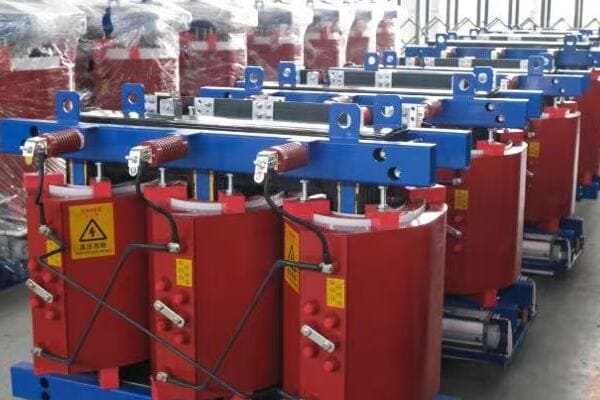
Key Aspects of UL Standards for Dry Type Transformers
Let’s explore the essential elements of UL standards:
- Scope and Application of UL 1561 and UL 1562
- Construction and Materials Requirements
- Safety Testing Procedures
- Fire Resistance and Environmental Considerations
- Labeling and Documentation Requirements
Scope and Application of UL 1561 and UL 1562
UL standards cover different transformer types:
- UL 1561: Larger dry-type general-purpose and power transformers
- UL 1562: Smaller dry-type general-purpose and power transformers
- Both focus on safety aspects and are widely recognized in North America
I recently consulted on a project for a commercial building where UL compliance was mandatory. Understanding the distinction between UL 1561 and UL 1562 was crucial in selecting the appropriate standard for different transformer sizes within the project.
Construction and Materials Requirements
UL standards set strict guidelines for transformer construction:
- Specify requirements for insulation materials and their arrangement
- Define standards for electrical clearances and creepage distances
- Outline requirements for terminals and internal connections
During a recent manufacturing audit for UL compliance, we paid particular attention to the insulation system and clearances. Meeting these requirements often necessitates specific design considerations that may differ from IEC or IEEE standards.
Safety Testing Procedures
UL standards mandate comprehensive safety tests:
- Dielectric voltage-withstand test
- Temperature rise test under various conditions
- Overload and short-circuit tests
- Mechanical stress tests
Here’s a quick reference for some key UL testing requirements:
| Test Type | Purpose | Key Criteria |
|---|---|---|
| Dielectric Withstand | Insulation integrity | No breakdown or flashover |
| Temperature Rise | Thermal performance | Within specified limits for insulation class |
| Overload | Performance under stress | No failure during and after test |
| Short-Circuit | Mechanical and thermal withstand | No deformation or insulation damage |
Fire Resistance and Environmental Considerations
UL standards place high emphasis on fire safety:
- Specify requirements for fire-resistant materials
- Define testing procedures for fire behavior
- Address environmental factors like moisture resistance and corrosion protection
I recall a project where we had to redesign a transformer’s enclosure to meet UL fire resistance requirements. This involved selecting specific materials and redesigning ventilation to ensure fire containment without compromising cooling efficiency.
Labeling and Documentation Requirements
UL standards have strict labeling and documentation rules:
- Detailed nameplate information including UL mark
- Comprehensive installation and safety instructions
- Maintenance and operating guidelines
Key considerations when working with UL standards:
- Ensure your design team understands the specific requirements of UL 1561 or UL 1562
- Pay close attention to material selection, especially for insulation and enclosures
- Plan for extensive safety testing as part of the design and manufacturing process
- Consider the impact of UL requirements on overall transformer design and cost
- Maintain detailed documentation for UL certification and ongoing compliance
In my experience, achieving UL compliance often requires a different approach to transformer design compared to IEC or IEEE standards. I’ve seen projects where transformers designed primarily for international markets needed significant modifications to meet UL requirements, particularly in terms of fire resistance and safety features.
For instance, in a recent project for a U.S. data center, we had to redesign the transformer’s cooling system to meet UL’s stringent fire safety standards while maintaining the required performance. This involved using specially rated materials and implementing additional safety features, which ultimately resulted in a more robust and safer product.
As we move on to discuss the key differences between IEC, IEEE, and UL requirements, keep in mind that UL standards often set the bar for safety considerations. Understanding these requirements is crucial not just for compliance, but for ensuring the highest levels of safety in transformer installations, especially in sensitive environments like commercial buildings and public spaces.
Key Differences Between IEC, IEEE, and UL Requirements?
Are you finding it challenging to navigate the differences between IEC, IEEE, and UL standards for dry type transformers? With projects often requiring compliance with multiple standards, understanding these differences is crucial. But how do these standards differ, and what impact do these differences have on transformer design and application?
Key differences between IEC, IEEE, and UL standards lie in their focus, technical specifications, and geographical application. IEC standards are internationally recognized and focus on performance. IEEE standards cater to North American power systems with specific voltage and BIL requirements. UL standards emphasize safety and fire resistance. These differences affect design parameters, testing procedures, and certification processes for dry type transformers.
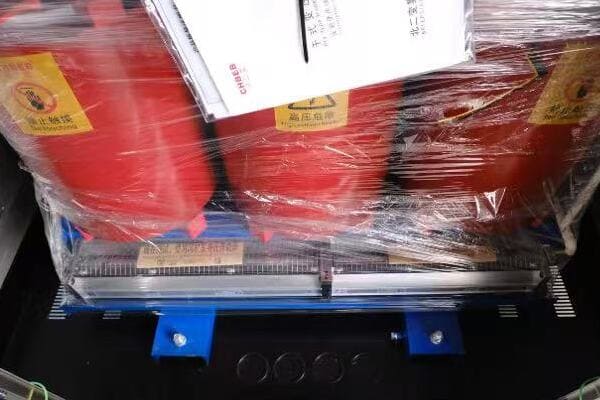
Analyzing the Differences Between IEC, IEEE, and UL Standards
Let’s break down the key differences in several areas:
- Scope and Geographical Application
- Technical Specifications and Ratings
- Testing Procedures and Requirements
- Safety and Environmental Considerations
- Documentation and Certification Processes
Scope and Geographical Application
Each standard has a different focus and application:
- IEC: Globally recognized, widely used in Europe, Asia, and many other regions
- IEEE: Primarily used in North America, tailored to U.S. and Canadian power systems
- UL: Focused on safety, mandatory for many North American installations
I recently worked on a multinational project where we had to design transformers compliant with both IEC and UL standards. The challenge was in reconciling the different approaches to performance and safety requirements.
Technical Specifications and Ratings
Significant differences exist in technical specifications:
- Voltage Ratings: IEEE specifies different standard voltages compared to IEC
- BIL (Basic Impulse Level): IEEE generally requires higher BIL ratings than IEC
- Impedance Ranges: IEEE has specific standard impedance ranges not found in IEC
During a recent design review, we had to carefully navigate these differences. For example, a transformer designed for 11kV in an IEC market needed to be adapted to 13.8kV for the IEEE market, affecting various design parameters.
Testing Procedures and Requirements
Testing requirements vary between standards:
- IEC focuses on type tests and routine tests
- IEEE includes design tests which are more extensive than IEC type tests
- UL emphasizes safety-related tests, including fire resistance
Here’s a quick comparison of some key testing differences:
| Aspect | IEC | IEEE | UL |
|---|---|---|---|
| Temperature Rise Test | Specified methods | Similar to IEC, with some variations | Includes additional safety criteria |
| Impulse Test | Required for certain voltage classes | Generally more stringent | Focused on safety aspects |
| Short-Circuit Test | Detailed requirements | Similar to IEC, with some differences | Emphasizes mechanical and thermal withstand |
Safety and Environmental Considerations
Approach to safety varies:
- IEC provides general safety guidelines
- IEEE incorporates safety considerations within performance standards
- UL has the most stringent safety and fire resistance requirements
I recall a project where a transformer designed to IEC standards required significant modifications to meet UL fire safety requirements, including changes to materials and cooling system design.
Documentation and Certification Processes
Documentation requirements differ:
- IEC requires comprehensive type test reports
- IEEE focuses on design test documentation
- UL has specific labeling and documentation requirements for certification
Key considerations when dealing with multiple standards:
- Understand the specific requirements of each standard for your project
- Consider designing to the most stringent requirements if multiple certifications are needed
- Be aware of the impact of different standards on overall transformer cost and design
- Plan for potentially different testing procedures and documentation
- Consult with experts or certification bodies for complex multi-standard projects
In my experience, successfully navigating these differences often requires a deep understanding of each standard and creative engineering solutions. I’ve seen projects where designing to meet multiple standards led to more robust and versatile transformer designs, albeit at a higher initial cost.
For example, in a recent global data center project, we designed transformers to meet the most stringent requirements across IEC, IEEE, and UL standards. While this approach increased upfront costs, it resulted in a product that could be deployed globally, offering significant long-term benefits in terms of standardization and logistics.
As we move forward to discuss which standard you should choose for your project, keep these differences in mind. The choice of standard can significantly impact your transformer’s design, performance, and global applicability.
Which Standard Should You Choose for Your Project?
Are you struggling to decide which transformer standard is most appropriate for your project? With IEC, IEEE, and UL standards each offering different benefits, making the right choice can be challenging. But how do you determine which standard aligns best with your specific project requirements and goals?
Choosing the right standard depends on your project’s location, application, and specific requirements. IEC is ideal for international projects and global compatibility. IEEE is best for North American power systems. UL is crucial for installations prioritizing safety, especially in buildings. Consider factors like geographical location, local regulations, export potential, and specific safety needs when selecting a standard.
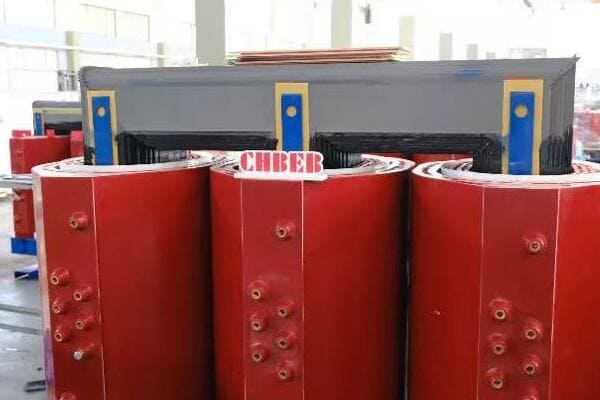
Factors to Consider When Choosing a Standard
Let’s explore the key considerations in selecting the right standard:
- Project Location and Market Requirements
- Technical Specifications and Performance Needs
- Safety and Regulatory Compliance
- Future Export or Expansion Plans
- Cost and Design Implications
Project Location and Market Requirements
The geographical location often dictates the standard:
- North America: IEEE and UL are typically required
- Europe and many international markets: IEC is widely accepted
- Some regions may recognize multiple standards
I recently advised on a project in the Middle East where the client initially specified IEEE standards. After analyzing local regulations and future export potential, we recommended designing to IEC standards with UL certification as an option, providing greater flexibility.
Technical Specifications and Performance Needs
Consider your specific technical requirements:
- Voltage levels and system characteristics
- Performance expectations (efficiency, noise levels, etc.)
- Compatibility with existing infrastructure
During a data center project, we chose to follow IEEE standards due to the specific voltage requirements and the need for compatibility with North American UPS systems, despite the project’s international location.
Safety and Regulatory Compliance
Safety requirements can be a deciding factor:
- UL standards for stringent safety needs, especially in buildings
- Local regulatory requirements may dictate standard choice
- Industry-specific safety norms (e.g., for oil and gas, marine applications)
Here’s a quick reference for standard selection based on primary concerns:
| Primary Concern | Recommended Standard | Key Benefit |
|---|---|---|
| Global Compatibility | IEC | Widely recognized internationally |
| North American Power Systems | IEEE | Tailored to U.S. and Canadian requirements |
| Safety in Buildings | UL | Stringent safety and fire resistance standards |
| Export Flexibility | IEC (with options for others) | Broadest international acceptance |
Future Export or Expansion Plans
Consider long-term business strategies:
- IEC offers the most flexibility for global markets
- Dual certification (e.g., IEC and UL) can open more markets
- Regional standards may limit future export opportunities
I recall a manufacturer who initially focused solely on IEEE standards. When they decided to expand internationally, they faced significant challenges. We helped them develop a strategy to incorporate IEC standards into their designs, greatly expanding their market reach.
Cost and Design Implications
Different standards can impact costs and design:
- Designing for multiple standards may increase initial costs
- Some standards may require more expensive materials or components
- Testing and certification costs vary between standards
Key considerations when choosing a standard:
- Analyze your target market and its regulatory requirements
- Consider both immediate needs and long-term business strategy
- Evaluate the cost implications of different standards
- Consult with local authorities or experts in ambiguous cases
- Consider the potential for dual or multiple certifications
In my experience, the choice of standard can have far-reaching implications beyond just technical compliance. I’ve seen projects where the right choice of standard opened new market opportunities, while the wrong choice led to costly redesigns and market entry barriers.
For instance, a European manufacturer I worked with decided to design their transformers to both IEC and UL standards from the outset. While this increased initial development costs, it positioned them to quickly enter the North American market when an opportunity arose, giving them a significant competitive advantage.
As we move on to discuss ensuring compliance for export and tender projects, remember that your choice of standard sets the foundation for your transformer’s design and market potential. Carefully considering all factors can lead to more versatile and marketable products.
How to Ensure Compliance for Export and Tender Projects?
Are you concerned about meeting diverse standard requirements for international export or complex tender projects? Ensuring compliance across different markets can be a daunting task. But how can you effectively navigate the maze of international standards and certification processes to make your transformers globally competitive?
Ensuring compliance for export and tender projects involves understanding target market requirements, potentially designing to multiple standards, and obtaining necessary certifications. Key steps include conducting thorough market research, considering dual certifications (e.g., IEC and UL), working with accredited testing laboratories, and maintaining comprehensive documentation. Flexibility in design and a proactive approach to certification can significantly enhance global market access.
Strategies for Ensuring Global Compliance
Let’s explore key strategies for meeting international standards:
- Market Research and Requirement Analysis
- Design for Multiple Standards
- Testing and Certification Processes
- Documentation and Traceability
- Adapting to Regional Variations
Market Research and Requirement Analysis
Start with thorough market research:
- Identify specific standards required in target markets
- Understand local regulatory requirements and preferences
- Analyze tender documents for standard specifications
I recently assisted a manufacturer in entering the Middle Eastern market. Our detailed analysis revealed that while IEC standards were generally accepted, some countries had additional local requirements. This insight was crucial in developing a compliant product strategy.
Design for Multiple Standards
Consider a flexible design approach:
- Design to the most stringent requirements across relevant standards
- Incorporate features that allow easy adaptation to different markets
- Consider modular designs for easier customization
During a recent project, we developed a transformer design that met both IEC and IEEE standards. While more complex initially, this approach allowed the client to bid on projects globally with minimal design changes.
Testing and Certification Processes
Plan for comprehensive testing and certification:
- Work with internationally recognized testing laboratories
- Consider witness testing options for key markets
- Plan for periodic re-certification as standards evolve
Here’s a quick guide to certification approaches:
| Approach | Description | Best For |
|---|---|---|
| Single Standard Certification | Certify to one primary standard | Focused market strategy |
| Dual Certification | Obtain certifications for two major standards (e.g., IEC and UL) | Broad market access |
| Multiple Certifications | Certify to several standards | Global export strategy |
| Market-Specific Certification | Obtain certifications as needed for each market | Targeted export approach |
Documentation and Traceability
Maintain comprehensive documentation:
- Detailed test reports for all relevant standards
- Clear traceability of components and materials
- Multilingual documentation for international markets
I recall a case where a client lost a major tender due to insufficient documentation of their compliance with local standards. This experience underscores the importance of thorough and well-organized compliance documentation.
Adapting to Regional Variations
Be prepared to adapt to regional differences:
- Understand and accommodate local voltage and frequency variations
- Consider climate-specific design modifications (e.g., for extreme temperatures)
- Be aware of regional preferences in features or specifications
Key strategies for ensuring compliance in export and tender projects:
- Develop a comprehensive understanding of target market requirements
- Consider a flexible design approach that can meet multiple standards
- Invest in robust testing and certification processes
- Maintain meticulous documentation and traceability
- Stay informed about evolving standards and regional variations
In my experience, success in international markets often comes down to a combination of technical excellence and strategic compliance planning. I’ve seen companies gain significant competitive advantages by proactively addressing compliance issues.
For example, a transformer manufacturer I worked with implemented a "global design" strategy, where their base models were designed to meet the most stringent requirements across IEC, IEEE, and UL standards. This approach, while initially more costly, allowed them to quickly respond to tenders worldwide and significantly expanded their market reach.
As we move to our final section on brand compliance examples, remember that ensuring compliance is an ongoing process. Staying ahead of regulatory changes and maintaining flexibility in your approach can open doors to new markets and opportunities.
Brand Compliance Examples: ABB, TBEA, Schneider, and More?
Are you curious about how leading transformer manufacturers navigate the complex landscape of international standards? Understanding how top brands approach compliance can provide valuable insights for your own projects. But what specific strategies do companies like ABB, TBEA, and Schneider Electric employ to meet diverse global standards?
Leading brands like ABB, TBEA, and Schneider Electric employ comprehensive strategies to meet global standards. ABB focuses on dual IEC and UL certifications for broad market access. TBEA emphasizes IEC compliance with adaptations for specific markets like the Middle East. Schneider Electric maintains a portfolio of products certified to multiple standards, allowing flexibility in global projects. These approaches demonstrate the importance of strategic standard compliance in international markets.

Analyzing Compliance Strategies of Major Brands
Let’s explore how different brands approach standard compliance:
- ABB’s Global Compliance Strategy
- TBEA’s Approach to International Markets
- Schneider Electric’s Multi-Standard Portfolio
- Siemens’ Focus on Regional Adaptations
- Emerging Trends in Brand Compliance Strategies
ABB’s Global Compliance Strategy
ABB emphasizes versatility in standard compliance:
- Designs often meet both IEC and IEEE/ANSI standards
- UL certification for products targeting North American markets
- Focus on energy efficiency standards across regions
I recently worked with a client who chose ABB transformers for a global data center project. ABB’s ability to provide units compliant with both IEC and UL standards was a key factor in their selection, simplifying the procurement process across multiple countries.
TBEA’s Approach to International Markets
TBEA focuses on adaptability to different markets:
- Strong emphasis on IEC standards for international projects
- Customization capabilities for specific regional requirements
- Particular focus on emerging markets and Belt and Road Initiative countries
During a consultation for a power infrastructure project in Central Asia, TBEA’s experience with adapting IEC-compliant designs to local conditions proved invaluable, especially in dealing with extreme environmental factors.
Schneider Electric’s Multi-Standard Portfolio
Schneider Electric maintains a diverse product range:
- Products certified to IEC, IEEE, and UL standards
- Emphasis on eco-design and energy efficiency across all standards
- Solutions tailored for specific applications (e.g., data centers, renewable energy)
Here’s a quick overview of these brands’ compliance strategies:
| Brand | Primary Standards | Key Strategy | Notable Strength |
|---|---|---|---|
| ABB | IEC, UL, IEEE | Dual certification | Global market flexibility |
| TBEA | IEC with regional adaptations | Market-specific customization | Strong in emerging markets |
| Schneider Electric | IEC, UL, IEEE | Application-specific solutions | Diverse product portfolio |
| Siemens | IEC, IEEE, regional standards | Regional focus | Strong in industrial applications |
Siemens’ Focus on Regional Adaptations
Siemens emphasizes regional expertise:
- Strong compliance with both IEC and IEEE standards
- Particular focus on industry-specific standards (e.g., for oil and gas, marine applications)
- Adaptations for regional grid characteristics and environmental conditions
I recall a project where Siemens’ ability to provide transformers meeting both European and North American standards was crucial for a multinational manufacturing company standardizing its global operations.
Emerging Trends in Brand Compliance Strategies
Observing these major brands reveals emerging trends:
- Increasing focus on dual or multi-standard certifications
- Integration of smart features compliant with various regional requirements
- Emphasis on sustainability and energy efficiency across all standards
Key takeaways from brand compliance strategies:
- Major brands prioritize flexibility in standard compliance for global competitiveness
- Customization capabilities for regional requirements are increasingly important
- Energy efficiency and environmental standards are becoming universal priorities
- Smart and IoT-enabled features are being integrated while maintaining compliance
- Brands are balancing global standardization with regional customization
In my experience, studying these brand strategies offers valuable lessons for any company looking to expand its transformer business globally. I’ve seen smaller manufacturers successfully adopt similar approaches, tailoring them to their specific capabilities and target markets.
For instance, a mid-sized manufacturer I advised recently adopted a strategy similar to ABB’s, focusing on obtaining both IEC and UL certifications for their key product lines. This approach, while initially resource-intensive, significantly expanded their ability to bid on international projects and enter new markets.
Another interesting case involved a company that took inspiration from TBEA’s approach. They focused on IEC compliance but developed a systematic process for adapting their designs to specific regional requirements, particularly for harsh environments. This strategy allowed them to successfully enter several challenging markets in Africa and the Middle East.
These brand examples highlight a crucial point: successful compliance strategies go beyond mere adherence to standards. They involve a deep understanding of market needs, a flexible approach to design and manufacturing, and a commitment to continuous adaptation as standards and market requirements evolve.
As we conclude this comprehensive guide to dry type transformer standards, remember that understanding and strategically implementing these standards is not just about compliance – it’s about opening doors to global opportunities and ensuring your products meet the diverse needs of a rapidly evolving energy landscape.
Conclusion
Navigating the complex world of dry type transformer standards is crucial for success in the global market. IEC, IEEE, and UL standards each offer unique benefits and cater to different regional and application needs. Understanding their differences, choosing the right standard for your project, and ensuring compliance for export and tender projects are key to expanding your market reach. By learning from the strategies of leading brands and adapting to evolving standards, you can enhance your competitive edge in the international transformer market.
Remember, at chbeb-ele, we’re not just sharing information – we’re empowering you to be part of the solution in creating a secure, clean, and efficient energy future. Let’s continue this journey together.
Free CHBEB Transformer Catalog Download
Get the full range of CHBEB transformers in one catalog.
Includes oil-immersed, dry-type, pad-mounted, and custom solutions.
Quick Message
Request A free quote
We'd like to work with you
- +86 15558785111
- [email protected]
- +86 15558785111
What We Do
CHINA BEI ER BIAN (CHBEB) GROUP, with 218 million in registered capital, originated from Beijing Beierbian Transformer Group. Headquartered in Beijing for R&D, it operates major production bases in Nanjing and Yueqing, producing high-quality products.
Latest Product
address
BeiJing
No 3,RongJing East Road,BeiJing Economic Technological Development Area,BeiJing,China
JiangSu
No 7️Xiangfeng Road,Jiangning,NanJing,JiangSu,China
WenZhou
No.211, Wei 16 Road, Industrial Zone, Yueqing, Wenzhou, Zhejiang, China.
XiangYang Industrial Zone ,YueQing,WenZhou,ZheJiang,China
contact us
- [email protected]
- +86 13057780111
- +86 13057780111
- +86 15558785111
Copyright © Bei Er Bian Group

